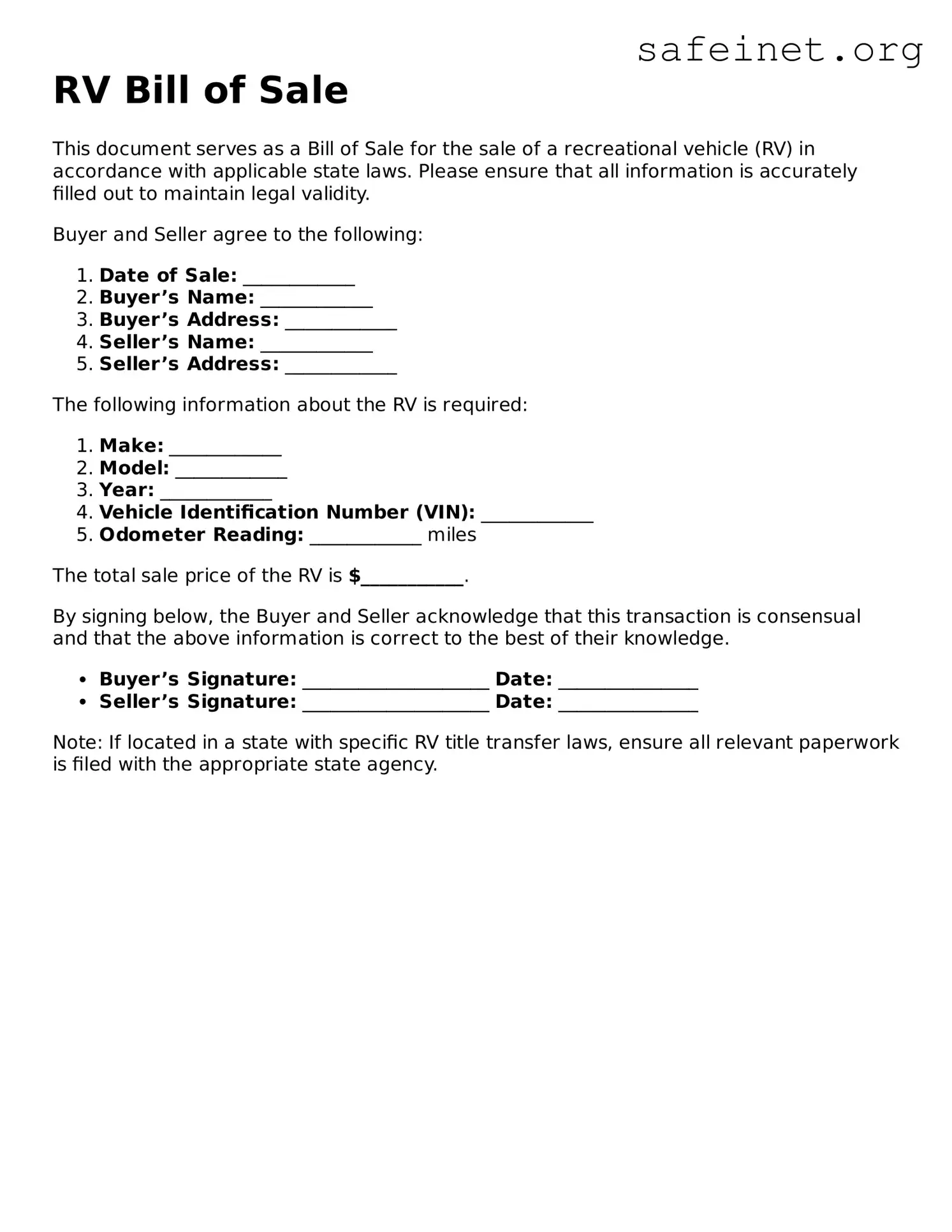RV Bill of Sale
This document serves as a Bill of Sale for the sale of a recreational vehicle (RV) in accordance with applicable state laws. Please ensure that all information is accurately filled out to maintain legal validity.
Buyer and Seller agree to the following:
- Date of Sale: ____________
- Buyer’s Name: ____________
- Buyer’s Address: ____________
- Seller’s Name: ____________
- Seller’s Address: ____________
The following information about the RV is required:
- Make: ____________
- Model: ____________
- Year: ____________
- Vehicle Identification Number (VIN): ____________
- Odometer Reading: ____________ miles
The total sale price of the RV is $___________.
By signing below, the Buyer and Seller acknowledge that this transaction is consensual and that the above information is correct to the best of their knowledge.
- Buyer’s Signature: ____________________ Date: _______________
- Seller’s Signature: ____________________ Date: _______________
Note: If located in a state with specific RV title transfer laws, ensure all relevant paperwork is filed with the appropriate state agency.
